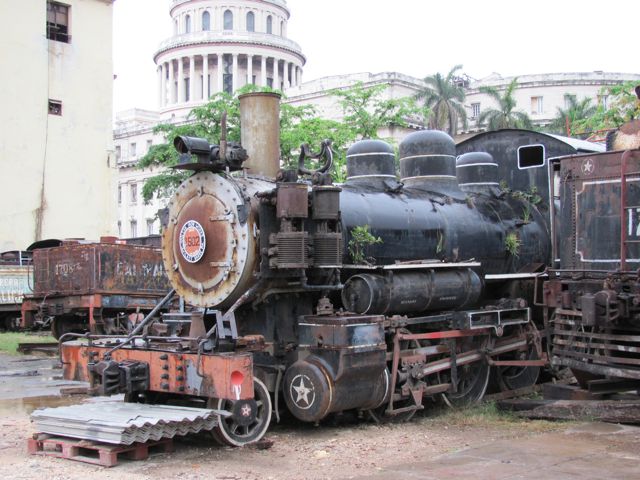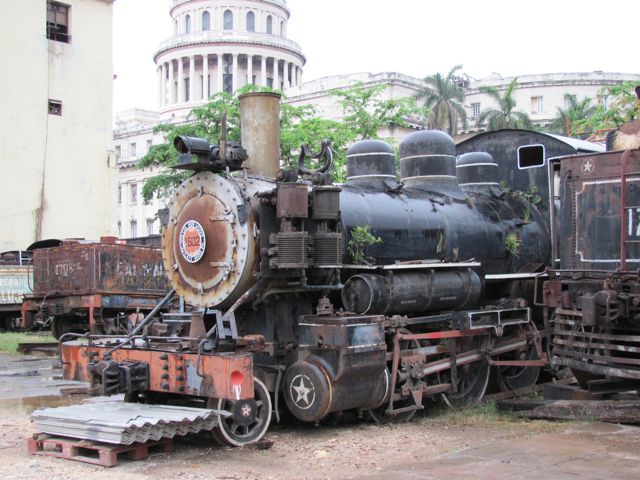“Hello United States! Remember me?” (the man in the pink shirt)
Our morning was spent visiting the Latin American School of Medicine (ELAM), a 20-minute bus ride from our hotel. There, we were met by the Director of the Foreign Affairs department who led us to a large conference table, complete with tabletop microphones (did I mention that the table was large?). Given the rain pounding the roof, these were a welcome addition. This facility was opened in response to a need for doctors who could assist victims of natural disasters. At the time that Fidel was searching for a location for this new school, Raul was the president of the armed forces. Raul felt that they needed three months to convert this former military academy, but Fidel gave them one month to empty and renovate the school. The school was inaugurated 11 November 1999, with 1,534 students from 18 countries enrolled. There are 300-350 faculty members.
Although the students are not selected by Cuba, there are several requirements that students must meet: (1) 18-25 years of age, (2) high school graduate (college graduate if from United States), (3) no health impairment or addiction, and (4) underprivileged students or those from families without the resources to pursue medical education. In 10 years, they have graduated more than 7,200 physicians (34 from the US).
The program runs 6+ years. For students who are not fluent in Spanish, they begin with six months to one year of premedical school to study the language. The first two years in the classroom focus on basic sciences, followed by clinical rotations.
Most students complete the entire program in Cuba. However, some return to their home countries for their 5th and 6th years. This enables students to gain experience with conditions that are present in their home countries but not here. An example used by the director was treating gunshot wounds; they don’t sell weapons in Cuba so students are not exposed to these injuries during their training.
When leaving the facility, we ran into two students from Boston and New York. When asked why they chose to pursue medical school in Cuba, the response was twofold: “It’s a free medical education” and “They really teach you how to be a community doctor.” The students pay no tuition and all books, uniforms, housing, and meals are provided. In addition, students are provided with a monthly stipend.
This program is funded by the Ministry of Health in Cuba. Our guide did not have an exact figure but guessed that the cost was ~46,000/student. We asked if these doctors-in-training were helping to fill an unmet need for medical care in Cuba but this was not the case. Rather, it seems to be an effort to export human resources where they are needed in the world. At present, there are 428 graduates of this program (6 from the US) in Haiti.
In other news, the Wooster 9 came close to becoming the Wooster 7 yesterday afternoon, while capturing the train photo. Fortunately, our 7 colleagues noticed our absence and had them stop the bus.






